Knowledge Sharing
Estimating Commercial Construction Costs Per Square Foot in Your Zip Code
Understanding Commercial Construction Costs
Commercial construction costs are a moving target, driven by fluctuating labor rates and supply chain constraints.
Whether you’re expanding to keep up with growth, right-sizing to maximize efficiency, or future-proofing your business with investments in technology; you need to know how to budget and plan for a successful construction project. Estimating commercial construction costs accurately is made easier by knowing the right questions to ask.
Commercial construction costs per square foot vary based on factors like the location of your project, the size and type of project you’re planning, the materials and finishes that you’ll use, labor rates in your area, and any unique space features in the commercial buildout like commercial kitchens or interconnecting staircases.
Understanding commercial construction costs is an important first step to budgeting and planning a seamless project.
Factors that affect construction costs
Let’s dig into the factors that have the biggest impact on construction expenses. Each of the following elements can significantly influence the budgeting and planning process for your construction project.
Current Market Conditions
Fluctuations in supply and demand for materials can affect pricing. This is especially true during periods of economic volatility.
Size and Complexity
Larger buildings require more materials and labor. Complex designs demand specialty materials, skilled labor, and more time. A project of greater size or complexity will increase the overall cost of construction.
Materials Used
The choice between standard and high-end materials can have a significant impact on the cost of construction. As can local vs imported materials. However, higher quality building materials may reduce maintenance costs over the long run.
Labor Rates
Areas where skilled labor is in higher demand will experience higher wages, which, in turn, contribute to higher construction costs.
Timeframe
Rushing a project limits opportunities to cut costs and demands more resources. A tighter schedule will raise the overall cost of a project.
Type of Commercial Project
It should come as no surprise that building a retail store will have a different budget than building a healthcare facility. A project’s intended use will determine the distinct specifications and regulations, which will influence the cost of construction substantially.
Technological Integrations
Incorporating advanced technologies into your facility will influence the building design which could raise the initial construction cost. However, high-tech designs often lower the operating costs of a facility in the long run.
Environmental Regulations
Environmental laws vary greatly by region and specific locality. Complying with local environmental laws may require additional planning and resources that can impact overall costs.
Location
The zip code where you plan to build will have a significant impact on the cost of a commercial construction project. From real estate prices to building codes, from labor rates to material costs, location will impact every element of the budget for your project.
It’s important to acknowledge the factors that impact the cost of commercial construction early in the planning stage of your project. Estimating commercial construction expenses should be clear and accurate to help you plan and budget for a successful build. Select a contractor who believes in a transparent budgeting and estimating process and will share the fine print details with you to understand the full scope of expenses.
Types of Commercial Construction Projects
One of the first decisions that you’ll need to make as you plan your construction project is between new construction and commercial renovation. Consider all of your options when making this decision to arrive at the choice that is best for your business.
While new construction, or the process of building a new ground-up building offers your business a range of options for location, customization, and technology that is only limited by your budget, it’s worth considering that new buildings typically have higher upfront costs, longer timelines, and the potential for challenges in site selection and securing permits.
A commercial renovation is usually less expensive than new construction. Renovations can be completed in less time than a build from scratch project. And, when you work with an experienced general contractor who specializes in tenant improvement construction, the opportunities for customization and technological upgrades are comparable to new construction.
Overall, the decision to renovate or build from scratch will depend on factors like budget, the availability of land or suitable existing space, customization needs, and long-term business plans.
Construction Cost per Square Foot for Commercial Buildings
Certain factors, like current market conditions, timeframe, and the choice to build or renovate affect commercial construction costs for any project regardless of the building’s location. Other factors are determined by the type of building project you are planning.
Let’s take a closer look at the impact of different types of commercial projects on the cost per square foot of commercial buildings.
Average construction costs per square foot will vary depending on whether you’re building healthcare facilities, a commercial office building, or a five-star hotel.
Unlike residential buildings, commercial structures require the expertise of a construction company that works with businesses to align building projects with business needs. Understanding the nuances is key to accurately estimating commercial construction costs and delivering successful projects on schedule.
Office Space
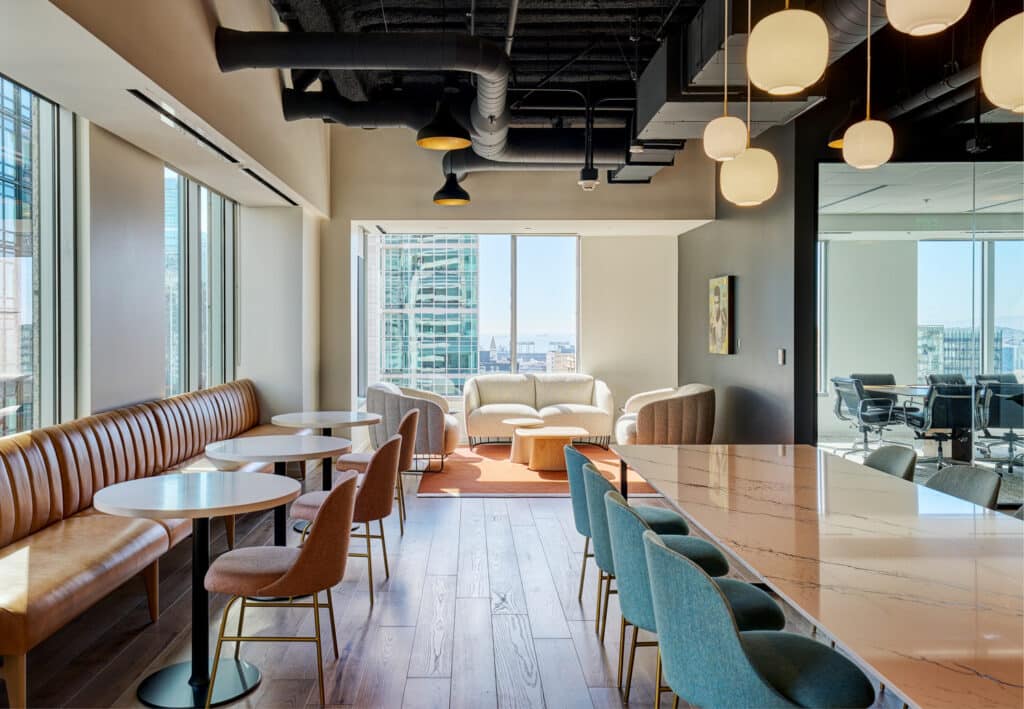
Office space construction costs vary depending on factors like location, building materials, and design complexity. One significant factor in determining the square foot cost is whether a commercial renovation will take place in a single-story office building, a mid-rise office building, or a high-rise office building.
Other factors that will impact the cost include the finishes, layout complexities, and infrastructure upgrades for technology. An experienced commercial construction firm can help you create a tailored plan that includes detailed estimates of all of your specific needs.
When planning an office build-out or renovation, it’s essential to consider various aspects such as the size of the space and any unique requirements that may impact the cost. By carefully evaluating these details, you can ensure a more accurate estimate of your project’s total expenses.
Life Science Facilities
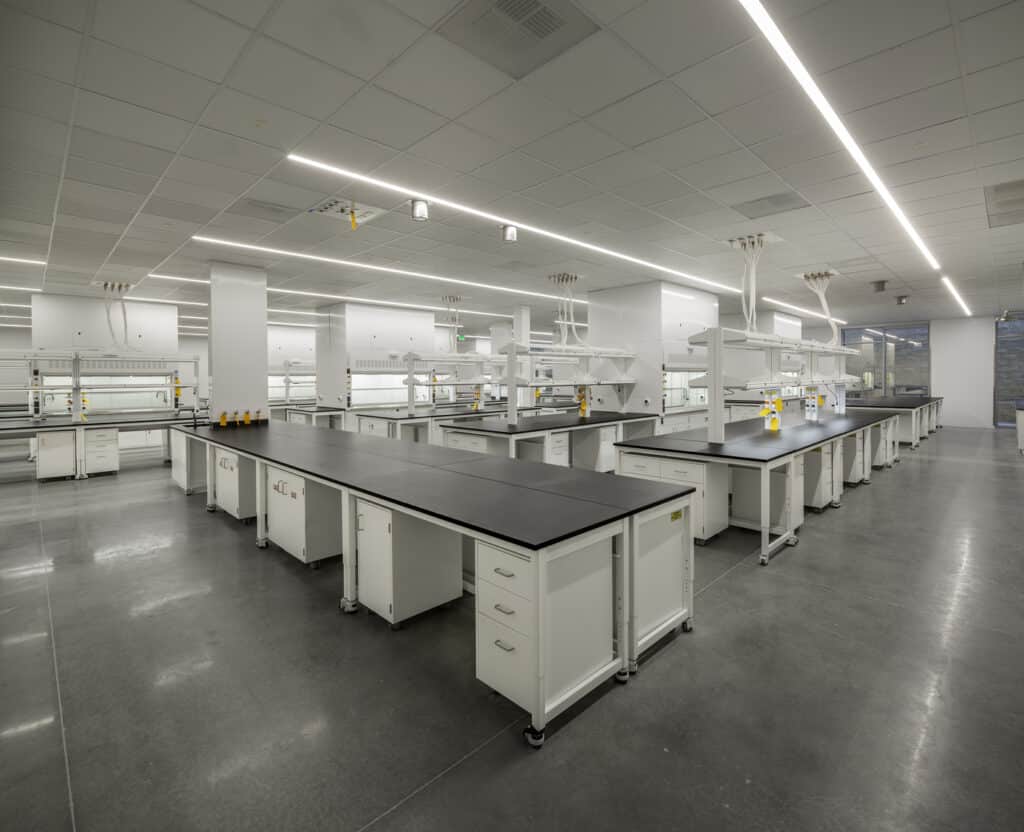
Life science facilities are highly specialized buildings that demand precision and attention to detail. These projects can range from a single-story commercial building to an entire campus of office buildings, manufacturing facilities, light industrial warehouse space, laboratory buildings, and parking structures.
Building facilities for research, development, and manufacturing in the life sciences industry requires strategic planning to ensure compliance with stringent regulations. From laboratories equipped with state-of-the-art technology to cleanrooms meeting rigorous standards, constructing life science facilities involves intricate design and implementation of specialized plumbing, HVAC, and electrical systems.
Adhering to strict environmental controls and incorporating robust safety measures is pivotal in creating state-of-the-art life sciences facilities. Achieving an optimal balance between functionality, compliance, and aesthetics is a challenge that demands an experienced general contractor with industry expertise.
Healthcare Facilities
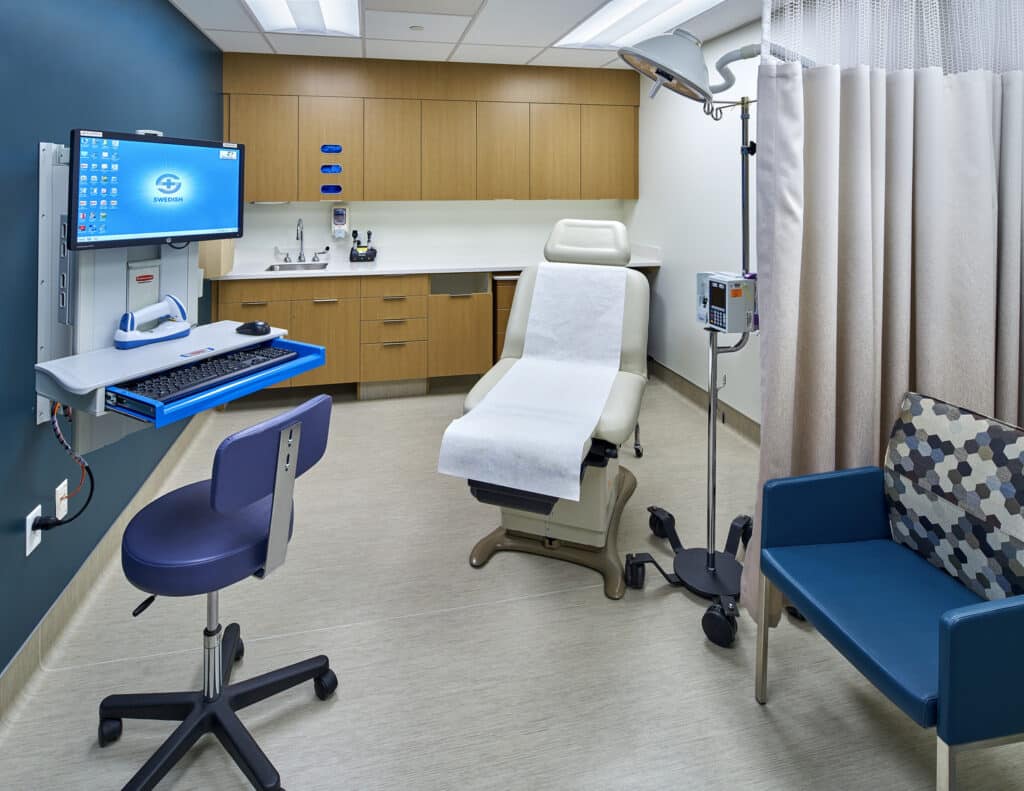
Healthcare facilities require meticulous planning and tailored solutions with a sharp focus on patient care. Estimating commercial construction costs for healthcare buildings involves factoring in specialized requirements such as medical equipment, accessibility standards, and specific zoning regulations.
Healthcare facilities range from medical office buildings to acute care facilities. A commercial renovation for a healthcare facility demands extensive knowledge of healthcare’s operational flows to ensure that the structure meets all of the necessary functional criteria while maintaining safety standards.
When estimating commercial construction costs for healthcare facilities, it is essential to consider factors such as building size, technology integration, electrical systems, compliance with health codes, and efficient utilization of space.
Specialized areas within these facilities like surgical rooms or imaging centers can significantly impact overall construction costs. Additionally, the use of sustainable construction practices, recycled materials emphasizing durability, and energy-efficient systems are playing an increasingly important role in modern healthcare facility development.
Hospitality and Retail
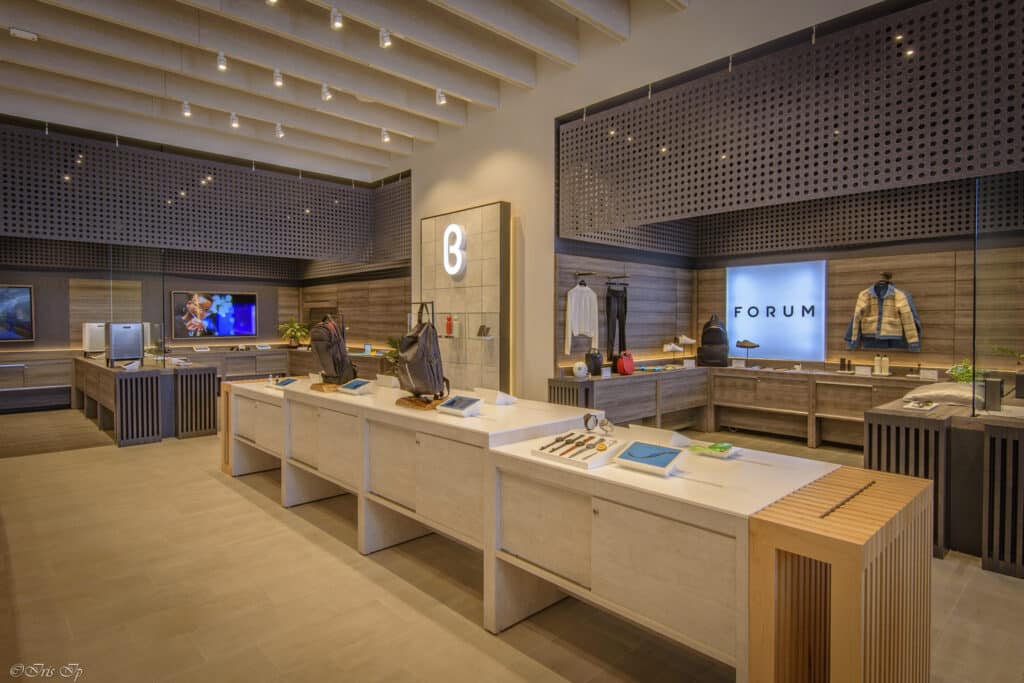
For both hospitality and retail spaces, customized build-out costs can vary significantly based on design aspects like interior finishes and unique features aimed at enhancing customer experience. A five-star hotel or a performing arts center has different needs than a retail space for fashion or home goods.
Successful commercial building projects require meticulous planning to ensure the building project meets the specific needs of the intended use. Creating a space that enhances customer experience while optimizing functionality is crucial.
Retail store construction cost estimation should include factors such as layout, materials, fixtures, and branding elements to develop a tailored space that amplifies the business’s brand. Hospitality construction demands attention to detail in creating an inviting ambiance that exceeds the guests’ expectations. Building costs for each of these sectors are influenced by location, building type, and the commercial real estate costs in that zip code.
Breakdown of Commercial Construction Cost per Square Foot by Region
Commercial construction cost varies widely across different regions.
In the Eastern US, high demand and labor rates can significantly increase commercial building expenses, making it one of the pricier areas for commercial projects. Conversely, in the Southern US, cost per square foot tends to be lower due to a combination of favorable weather conditions for year-round construction and more affordable labor costs.
Each region has unique factors that influence the overall cost per square foot for commercial buildings. The Midwest offers moderate prices with access to abundant materials and average labor cost, while the Western US faces higher costs due to stringent regulations and environmental considerations.
These regional differences play a central role in estimating commercial construction cost per square foot, which underscores the importance of understanding building costs in local markets when planning new construction or building renovation projects.
Commercial Construction Cost per Square Foot in the Eastern US
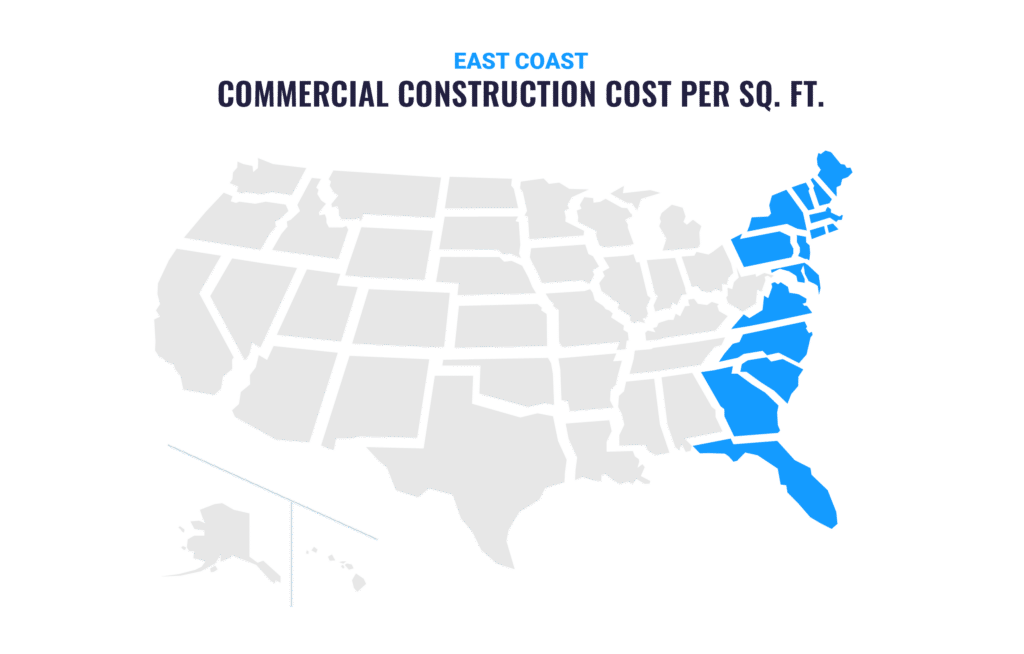
Average commercial construction costs in the Eastern United States are heavily influenced by the large urban areas. Cost per square foot varies widely depending on whether your building’s location is in the New York Metro area or further south along the Eastern seaboard.
New York, NY has the highest average costs per square foot for commercial buildings in the eastern half of the country. High labor and material costs lead to average prices ranging from $350 to $500 per square foot. Boston, MA, and Washington, D.C. average costs in the mid-$200 to mid-$400 range per square foot. Philadelphia, PA and Miami, FL are relatively inexpensive by comparison with average costs that range from the low-$200s to mid-$300s per square foot.
These figures can serve as a guide for investors and developers to help estimate the total construction cost for their projects. But cost estimates are just a starting point. They should never take the place of expert guidance from an experienced general contractor.
Commercial Building Cost per Square Foot in the Western US
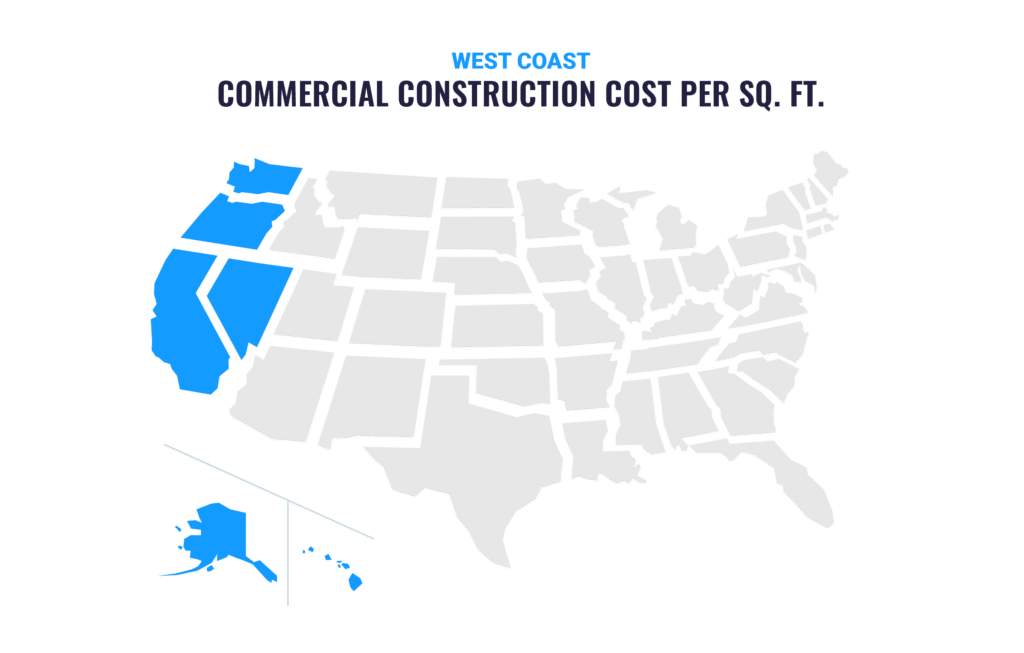
While the West Coast has cities like Seattle, WA, and San Francisco, Los Angeles, and San Diego in California that rival the urban spaces of the East Coast, construction costs are impacted more in the Western region by economic conditions, labor rates, and material costs than by proximity to a metropolitan area.
The average commercial construction cost in California ranges from $250 to $350 per square foot. You should expect building costs to be higher in major cities than in other areas. Washington and Oregon have more moderate labor costs leading to average building cost in the low-$200 to low-$300 range per square foot. Nevada and Arizona enjoy favorable regulatory environments and lower costs for labor and materials, leading to average costs in the mid-$100 to upper-$200 range per square foot.
Costs in the Western region of the United States are heavily influenced by local regulations, the availability of labor and materials, and the specific type of project being undertaken. This summary of commercial building costs is a good place to begin the planning process for your next commercial building project.
Considerations for Midwest Commercial Construction Projects
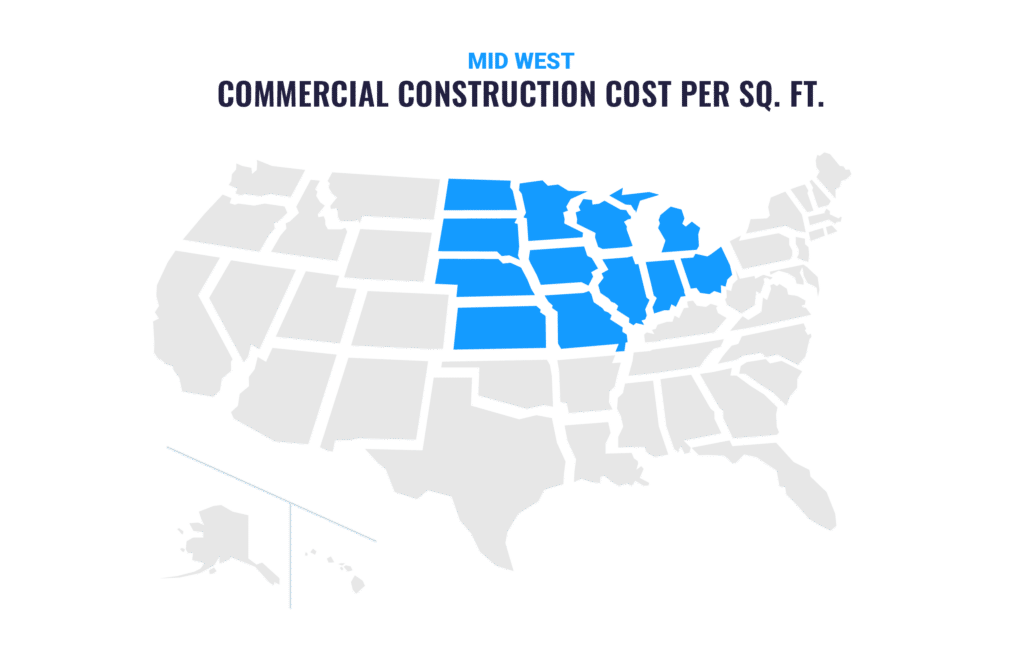
In the Midwest, total construction costs depend more on the types of commercial structures involved. Manufacturing facilities cost less per square foot than high-rise buildings or specialized commercial buildings like hospitals or life sciences facilities.
In the Midwest, you should expect to pay between $120 and $180 per square foot for basic office space. Premium office space in high-rise buildings will cost between $250 and $350 per square foot. A commercial building for industrial or warehouse operations should fall in the $100 to $150 range per square foot. Retail space typically falls in the $150 to $200 range. Healthcare facilities and life science facilities have a higher cost per square foot. These commercial projects will fall in the $300 to $500 per square foot range.
These figures are just a starting point for budgeting purposes. They can help estimate commercial building cost. Of course, working with an experienced general contractor on projects like yours will help control the total cost as material, labor rates, and real estate costs can have a significant influence.
Average Construction Cost per Square Foot in the Southern US
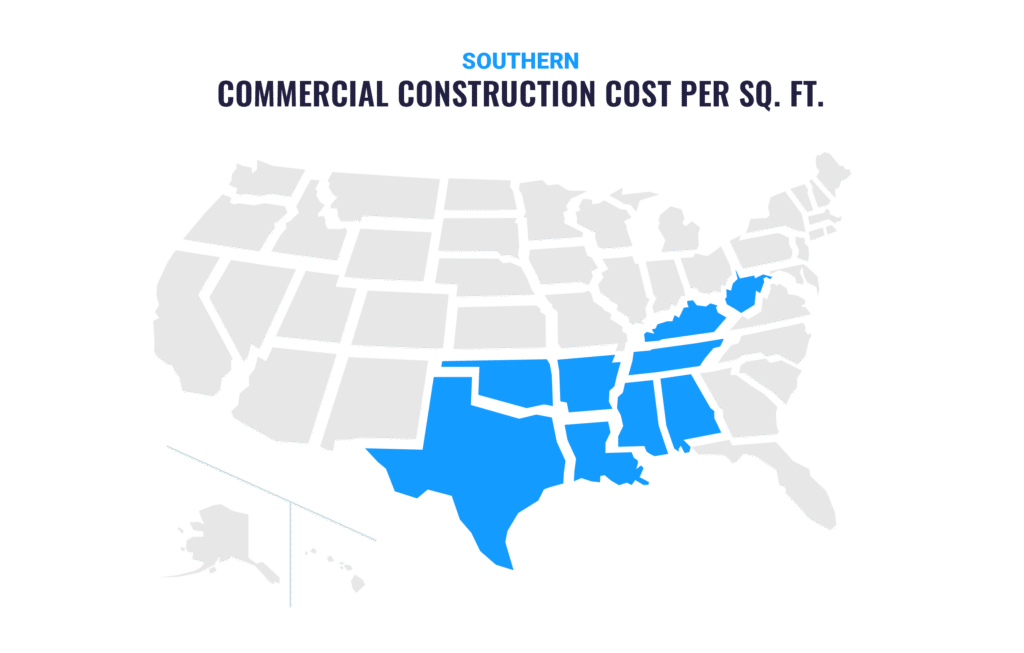
Building a commercial structure in the Southern US can cost anywhere from $100 to $200 per square foot for basic construction. However, the average price per square foot can vary greatly depending on the specific location within the region and other factors such as building materials, labor costs, and project scope and type.
The total cost of constructing a commercial building in the Southern US is influenced by factors such as design complexity, site conditions, access to utilities, local building codes and regulations, building permits, and market demand.
Commercial construction in urban areas, such as Miami, FL, tends to have higher construction costs compared to rural locations. That is due to differences in accessibility and infrastructure. Commercial office buildings in downtown Atlanta, GA will have a higher cost per square foot than manufacturing facilities in rural areas.
The Impact of Zip Code on Construction Costs per Square Foot
The location of a commercial construction project can significantly affect the cost per square foot.
Urban areas with high demand may drive up costs due to limited space and higher real estate prices. Suburban or rural locations, on the other hand, might offer more affordable material and labor costs. Factors such as local building codes, building permits, and the availability of skilled labor will also play a role in determining the total cost per square foot.
Unique characteristics within each zip code can influence construction costs. Coastal areas may have stricter building regulations due to environmental considerations like hurricanes or earthquakes. In contrast, inland regions could face different challenges related to weather or soil conditions that determine foundation requirements and construction methods. Regional requirements for energy-efficient materials and energy-efficient systems are also a consideration.
Understanding these nuances will lead to a more accurate estimate of commercial construction costs.
Planning to Control Commercial Construction Cost
It takes extensive planning to accurately estimate, budget, and manage a commercial building project. Knowing the average construction cost in the zip code where you plan to build is just the first step. Here are the essential steps to take during the planning phase to help set your project up for success.
Define Scope and Objectives
It is important to clearly outline the specific requirements, functionality, and purpose of a commercial building to ensure alignment with your budget and expectations.
Engage with Architects and Contractors Early
Close collaboration with experienced professionals at the onset of your project allows you to leverage their expertise in creating accurate cost estimates and efficient designs that are tailored to your specific needs.
Create a Detailed Timeline
It’s essential to establish a comprehensive schedule that outlines every phase of the construction process, including milestones and deadlines for each stage.
Create a Contingency Plan
Anticipate unexpected challenges or changes by allocating a contingency budget for unforeseen expenses or modifications during the construction project.
Communicate Effectively with Stakeholders
It’s important to maintain open lines of communication with all of the parties involved throughout the project so that they can address issues promptly, make informed decisions, and keep everyone aligned on goals.
Choose an Expert Commercial Construction General Contractor with Experience in Your Zip Code
Detailed planning is key to controlling commercial construction costs while delivering a successful commercial building project.
Planning and managing a successful project is easier when you work with an expert. Look for professionals with experience in the specific type of commercial building project you need and in the zip codes where you plan to build.
Ensure that the general contractor is qualified to manage a commercial office, life science facility, healthcare facility, or hospitality renovation. Verify that they know local building codes and regulations. A knowledgeable contractor can efficiently navigate the complexities of obtaining permits and approvals. They will have a network of subcontractors with the skills required for your project. Look for a team that offers comprehensive services from project planning to cost estimation and on-site management.
MEET WITH OUR EXPERTS
READ NEXT
